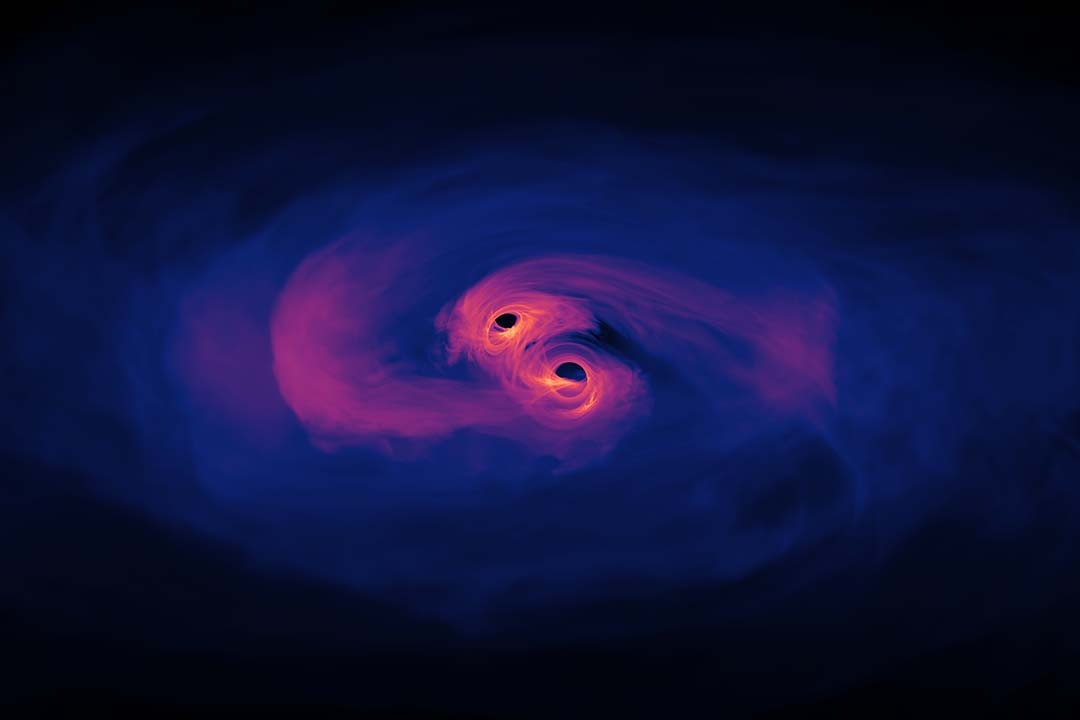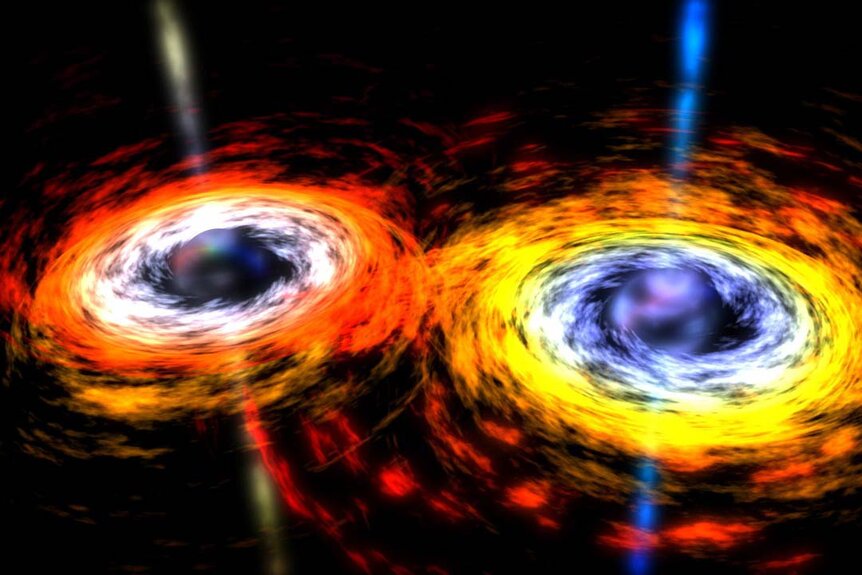Create a free profile to get unlimited access to exclusive videos, sweepstakes, and more!
Merging black holes show us what happens when galaxies collide
A glimpse into our own galaxy's future.

The 1981 science fiction horror film Galaxy of Terror (now streaming on Peacock!) is a little known but important entry in 20th Century cinema. It features the early work of none other than James Cameron and laid the foundation for Cameron’s breakout a few years later with The Terminator and Aliens.
The movie takes place in the distant reaches of outer space, when the crew of the Quest enters orbit around the planet Morganthus. As the ship nears the planet, the captain loses control and crash lands on the surface. Once there, the crew encounters a strange pyramid-shaped object, which latches onto their most deep-seated fears and brings them to life. In an infinitely large universe, there are infinite opportunities for cosmic horror.
So far, we’ve blessedly escaped discovering the sorts of advanced alien technologies capable of weaponizing our own minds, but scientists have found more grounded terrors as they’ve peered into the great cosmic deep. Recently, a team of astronomers using the Atacama Large Millimeter/Submillimeter Array (ALMA) discovered a pair of supermassive black holes on a collision course with one another. When those black holes finally do smash together, they’ll unleash so much energy they will literally shake spacetime itself. That’s according to a paper recently published in The Astrophysical Journal Letters.
RELATED: Turning the Moon into a gravitational wave detector.
ALMA is a collection of 66 radio telescopes in the Atacama Desert in northern Chile. Scientists used the array to identify the pair of black holes, collectively known as UGC4211, which reside about 480 million light years from us in the vicinity of the constellation Cancer.
Astronomers were interested in the location because it’s the site of a galactic merger in progress, something which our own galaxy is doomed to endure about 4.5 billion years from now. Those two distant galaxies have already come together and they’ve made a bit of a mess in the process. While galactic mergers are relatively tame – there are huge distances between stars and most of them will pass by one another without so much as a how do you do – they do kick up a lot of gas and dust as they rearrange the stellar deck chairs.
It’s that gas and dust that gets gobbled up by the two supermassive black holes at the center of each galaxy. As the galaxies come together their black holes are treated to an all you can eat buffet, a last meal before the big hurrah.
At first, astronomers weren’t sure they were actually looking at two different black holes. They’re presently 750 light years apart and spiraling closer together with every passing second. While 750 light years is a huge distance to you and me, it’s pretty small cosmically speaking and that’s especially true when compared to the 480 million light year distance between here and there. The relative distance between the two black holes is so small that astronomers couldn’t resolve them with just one telescope or observation.
After ALMA made the initial identification, astronomers made a total of 12 observations with seven different observatories on the ground and in space. According to their findings, the two black have masses of 125 million and 200 million times that of the Sun. Over the next few hundred million years, the black holes will pull slowly closer to one another, gobbling up gas and dust along the way. Eventually, more than 300 million times the mass of the Sun will come together in one of the most violent explosions the universe has ever seen, according to a statement from the Simons Foundation.
The black hole merger will send gravitational aftershocks across spacetime, creating gravitational waves stronger than any we’ve detected so far. While those waves won’t reach us for millions of years, they might hint at the existence of more black hole mergers waiting to be discovered. Once astronomers knew what to look for, they didn’t have to look long to find UGC4211. The relative ease with which the binary black hole system was discovered suggests that there are plenty more of them waiting for us to find. If black hole mergers are more common than we previously supposed, we should be able to detect them by picking up on the waves they leave behind in the fabric of space.
There are even more nightmares in space in Space: 1999, streaming now on Peacock.



























